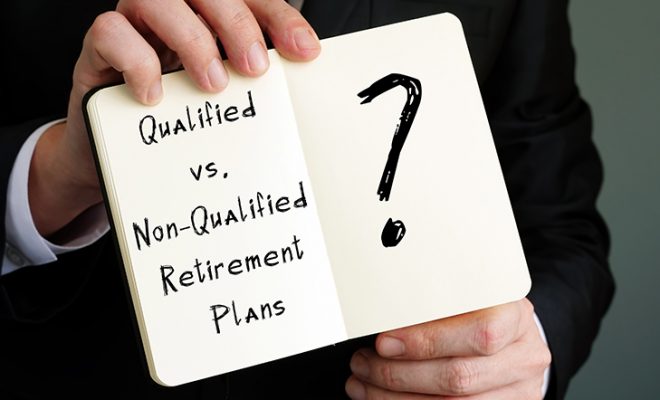What is Phased Retirement, and How Does it Work?

As the American workforce ages, a growing number of workers face the challenging decision of when and how to retire. For many, the notion of abruptly leaving the workforce and embracing a life of leisure seems impractical, if not daunting. Moreover, the pandemic and subsequent layoffs have prompted workers to reassess their career and retirement aspirations, leading some to contemplate early retirement or a gradual transition into retirement. Notably, over 38% of HR executives surveyed by a media house now offer phased retirement, which is more than double the pre-Covid-19 rate.
But what is phased retirement? This type of retirement arrangement allows workers to gradually transition into retirement, reducing their work hours and responsibilities in a staggered manner. During this time, they continue receiving steady income and pension benefits. While phased retirement is not a new concept, it is gaining popularity as more workers seek flexible and customizable retirement options. Phased retirement is a win-win situation for both the employer and the employee. The employer benefits from retaining experienced and knowledgeable employees, while the employee benefits from a gradual transition to retirement and continued pay, which can help ease the financial and emotional strain that often accompanies retirement.
Consider consulting with a professional financial advisor who can guide you on phased retirement and help you attain financial security.
This article discusses phased retirement, its benefits, downsides, and more.
What is phased retirement?
Phased retirement is a work arrangement that allows employees to gradually reduce their work hours and responsibilities over a period of time before retiring completely. Phased retirement programs are typically designed for employees approaching retirement age but are not quite ready to retire completely.
Rather than a sudden transition from full-time work to complete retirement, phased retirement enables employees to continue working part-time while also receiving partial retirement benefits. The specifics of phased retirement can vary depending on the employer’s program, but typically, the employee and employer will agree on reducing the former’s work hours and responsibilities. For example, an employee may gradually reduce their work hours from 40 to 20 hours per week over a period of six months or a year.
Let’s look at some major components of what phased retirement might look like:
- Reduced hours: In this arrangement, the employee gradually reduces their work hours over time, transitioning to a part-time or flexible schedule.
- Job sharing: In this scenario, the employee shares their job responsibilities with another employee, allowing both to work and contribute.
- Consulting: The employee starts working as a consultant wherein he retires from their current position but continues to work on a part-time or project basis as needed.
- Reduced responsibilities: Companies also offer to reduce the employee’s responsibilities wherein he retains his current work schedule and hours but gradually transitions to less demanding responsibilities or a lower-level position.
- Seasonal work: In this situation, the employee may work seasonally, taking time off during certain months of the year and working during others.
- Mentoring: An employee may transition to a role as a mentor or coach, helping to train new employees and avoid knowledge gaps.
It’s important to note that the specifics of a phased retirement program can vary widely depending on the employer and the employee’s needs. Some employers may offer structured programs with specific requirements, while others may allow employees to negotiate their phased retirement plan. Speaking with your employer or HR representative to learn more about available options is always a good idea.
Also see: How Living Longer Will Impact Your Retirement
What are the key benefits of phased retirement?
In case you’re wondering how phased retirement benefits both employees and employers, note that this arrangement allows companies to retain valuable talent for longer, facilitates knowledge exchange, and provides opportunities for mentorships. This helps in the overall growth of both employees and employers. Phased retirement can be particularly advantageous for companies with specialized processes that may take time to transfer to new employees.
A survey has revealed that up to 8% of companies have introduced formal phased retirement plans, while 23% of participants offer some kind of voluntary phased retirement program.
The key benefits of phased retirement are as follows:
- Offers financial flexibility
Financial flexibility is a significant concern for many individuals when transitioning into retirement. Phased retirement can address this concern by allowing individuals to earn an income with reduced work hours and responsibilities. This can be particularly impactful for those not yet prepared to retire fully but still want to maintain some financial security.
- Helps transition to a part-time work arrangement smoothly
Leaving the workforce is a significant lifestyle change, and it can be challenging for employees who are accustomed to working full-time. With phased retirement, employees can gradually reduce their work hours and responsibilities, giving them the time to adjust to their new routines. This approach can help employees avoid the abrupt transition of leaving work altogether and offer a more seamless transition into retirement.
- Helps extend Social Security and health benefits
Social Security benefits are typically available to individuals who have worked for at least 10 years and have earned enough credits. However, individuals who retire before reaching their full retirement age (FRA) may receive reduced benefits. In some cases, phased retirement can be an option to help bridge the gap until an individual reaches their FRA and becomes eligible for full Social Security benefits.
Further, health insurance is a critical concern for many individuals considering early retirement. Phased retirement can help extend health insurance benefits by allowing employees to continue working and receive health insurance coverage until they reach their FRA or until they become eligible for Medicare.
Also see: 8 Retirement Planning Tips to Map Out Your Financial Success
What are the potential downsides of phased retirement?
Phased retirement, for all its benefits, has its potential drawbacks. It is thus essential to weigh the pros and cons before deciding to take this route. Let’s take a closer look at some of the potential drawbacks of choosing phased retirement.
- Financial drawbacks
One of the most significant drawbacks of phased retirement is the potential impact on an individual’s finances. While a person may earn some income during this time, they may also receive reduced benefits from their employer, which can adversely affect their overall retirement income. Additionally, employers’ policies may require a greater share of healthcare costs, which can be a substantial expense.
- Social isolation
Another drawback of phased retirement is the potential for social isolation. To some people, the workplace provides a sense of community and social connections, and such individuals may miss this aspect of work life. While phased retirement may help mitigate this to some extent, it is still a significant life change that can be isolating.
- Difficulty in career advancement
In some industries and job markets, securing new job opportunities or advancing professionally may be challenging once an individual enters phased retirement. This can be particularly challenging if a person needs or wants to return to work full-time at some point.
- Lack of opportunities due to ageism
Ageism remains prevalent in many workplaces, and phased retirement may not be immune to it. Despite the benefits of phased retirement, some employers may view older workers as less valuable or less capable than their younger counterparts. This can impact an individual’s opportunities for professional development, job security, and more.
SPONSORED WISERADVISOR
Is phased retirement the right option for you?
Phased retirement can be an attractive option for those who want to transition into retirement slowly rather than abruptly stopping work altogether. However, it may not be the right choice for everyone.
If you are considering phased retirement, you must first assess your financial situation and goals. Determine whether you can reduce your income and still maintain your desired lifestyle. You should also consider how phased retirement will impact your retirement savings and benefits, and your eligibility for Social Security.
Another factor to consider is your personal preferences and goals. Do you want to continue working with reduced hours and responsibilities, or would you instead focus on other pursuits such as travel, hobbies, or volunteering? Phased retirement can balance work and leisure, but ensuring it aligns with your overall goals and priorities is essential.
Also, you should evaluate your employer’s policies and options for phased retirement. Not all companies offer this option, and the terms and conditions can vary. Further, reducing your hours may not be feasible if you have a physically demanding job. Similarly, if you are looking to retire early or have significant financial obligations, a phased retirement may not align with your goals.
To conclude
Phased retirement has emerged as an attractive option for employees looking to transition gradually into retirement and for companies looking to retain valuable talent. Also, as the workforce continues to change post-pandemic, phased retirement will likely play a more significant role in shaping the future of work. By embracing this trend and other strategies for employee retention and engagement, companies can create a more dynamic, agile, and resilient workforce that is better equipped to navigate the challenges and opportunities of the future.
Use the free advisor match tool to match with experienced financial advisors who can guide you effectively on phased retirement, its pros and cons, and whether you can achieve your goals by undergoing this transition. Answer a few questions based on your financial needs, and the match tool will help connect you with 1-3 financial advisors that may be suited to help you.











